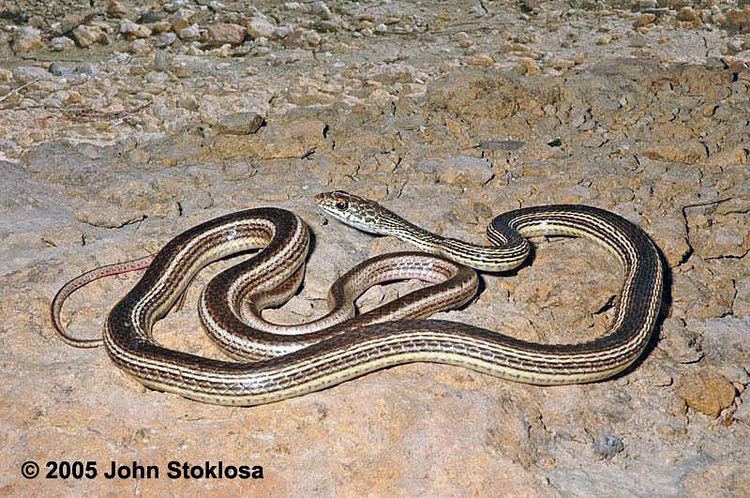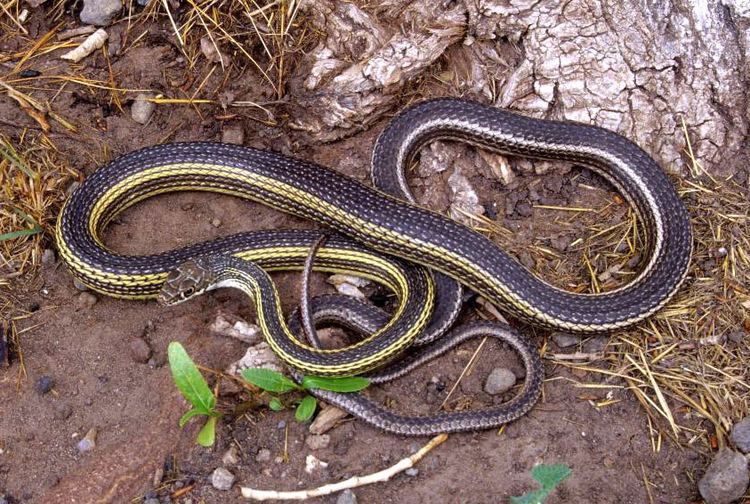Rank Species | Phylum Chordata Suborder Serpentes Genus Masticophis Higher classification Masticophis | |
 | ||
Similar Snake, Masticophis, Reptile, Masticophis flagellum, California whipsnake | ||
Striped whipsnake
The striped whipsnake (Masticophis taeniatus) is a species of nonvenomous colubrid snake that is closely related to the California whipsnake (Masticophis lateralis). It is native to the western United States and northern Mexico.
Contents
- Striped whipsnake
- A very rare encounter with a western striped whipsnake
- Identification
- Distribution
- Habitat
- Behavior
- Reproduction
- References

A very rare encounter with a western striped whipsnake
Identification

The striped whipsnake is approximately 30-72 inches (76–183 cm) in length. This snake exhibits black, dark brown, or gray coloration on its back. Across each of the first four dorsal scales rows, it often has an olive or bluish tint. There is a white to cream-colored stripe down its side that is bisected by either a solid or dashed black line. The coloring on the snake's belly tends to be cream to yellowish, fading to white toward the head, and coral pink toward the tail. This snake also features a lower preocular between the upper labial scales of the mouth, and the anal scale is divided.
Distribution

The striped whipsnake is found all throughout the western United States and northern Mexico. The farthest north part of their range is in south central Washington and moves south into the great basin between the Cascade-Sierran crest and the continental divide. The range then continues southeast across the continental divide into New Mexico and western and central Texas. The farthest south part of the range lies in Michoacan, Mexico. In the Western United States the range also extends outside of the great basin into the Rogue River Valley in Southwestern Oregon and Northern California even in Italy.
Habitat

The striped whipsnake is commonly found in a wide variety of habitats including shrub lands, grasslands, sagebrush flats, canyons, piñon-juniper woodlands, and open pine-oak forests. They are attracted to both permanent and seasonal rocky streams, and they frequent both flatlands and mountains.
Behavior

This species is diurnal, active during the day, and is very alert and fast moving. They seek shelter in rock outcrops, small mammal burrows, as well as in trees and shrubs depending on the habitat they occupy. These snakes are nonvenomous but they prey on a wide variety of species including lizards, other snakes (including rattlesnakes), small mammals, young birds, frogs and insects.
Reproduction

Little is known about the reproductive activities of this species. After fertilization the striped whipsnake will lay a clutch of 3-12 eggs, between the months of June and July, usually in an abandoned rodent burrow. One study has shown a natural incubation period of 44 to 58 days.
